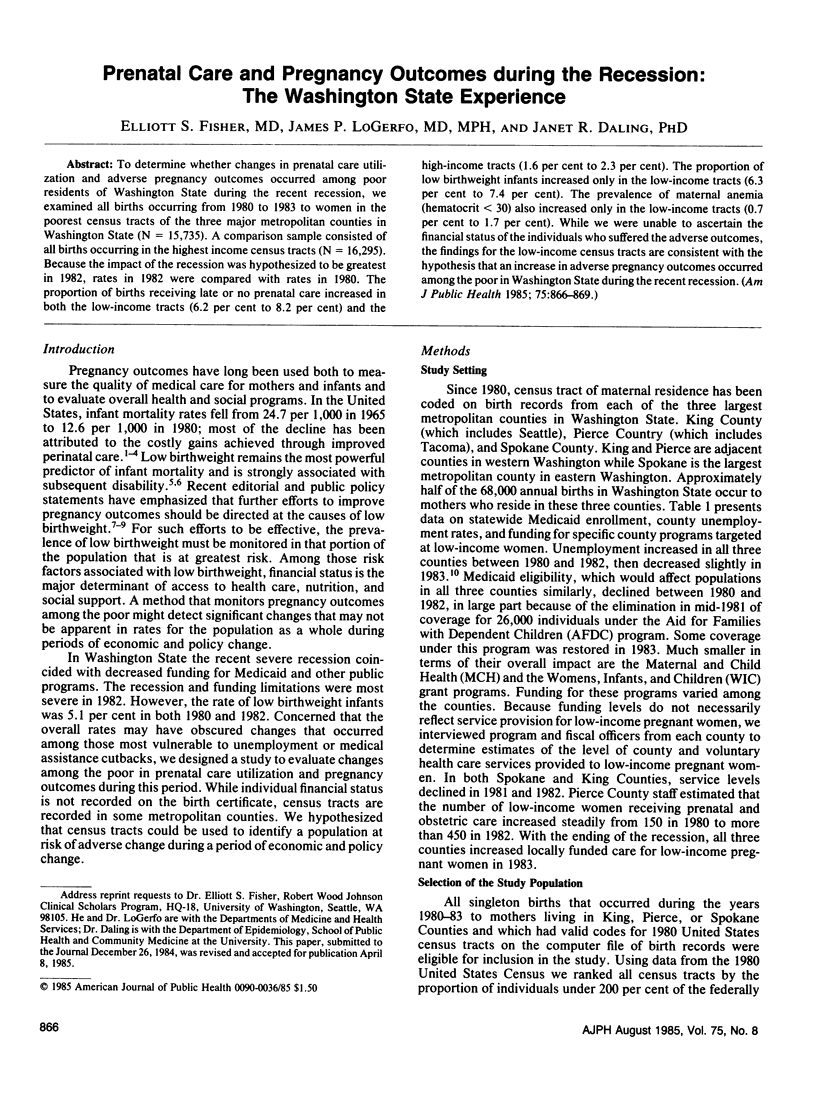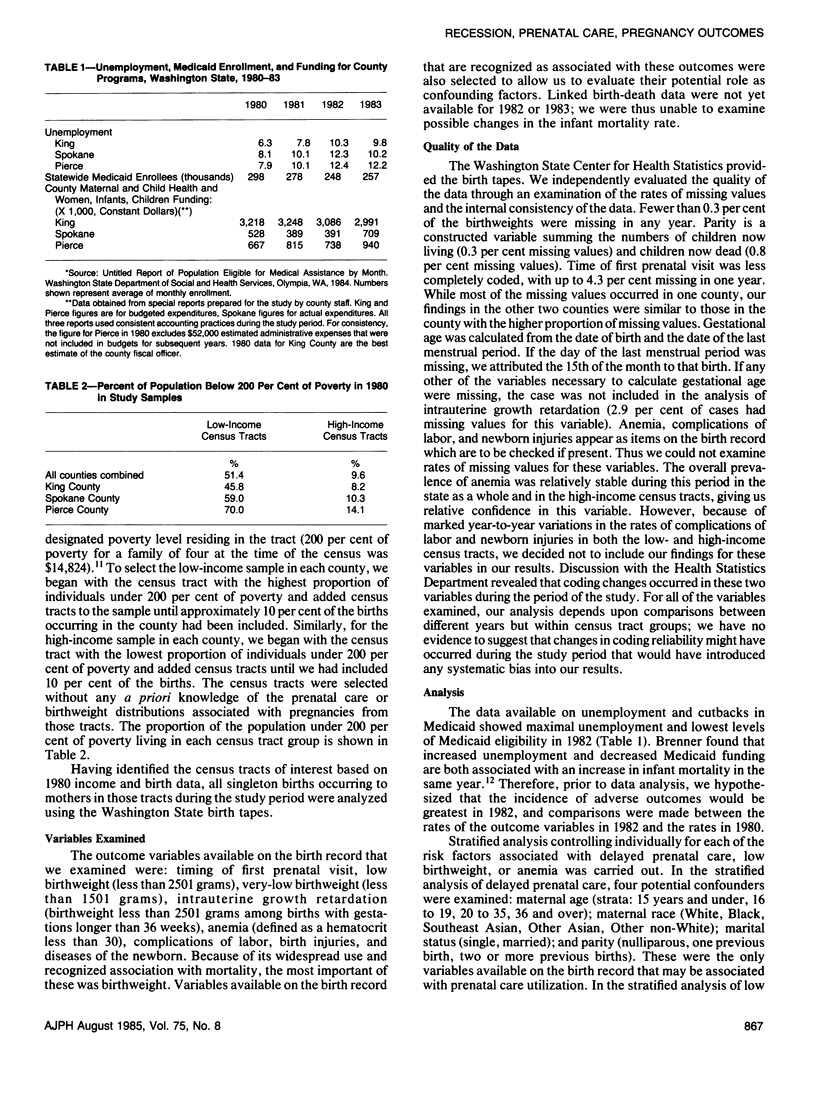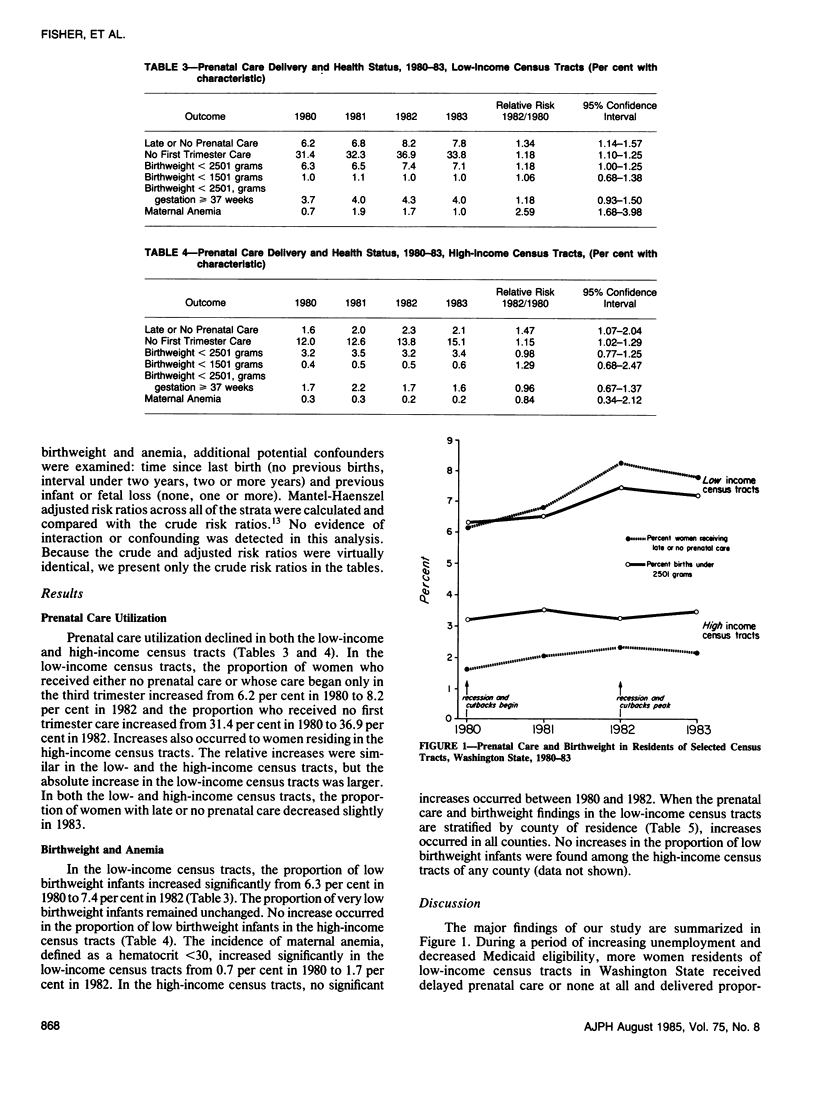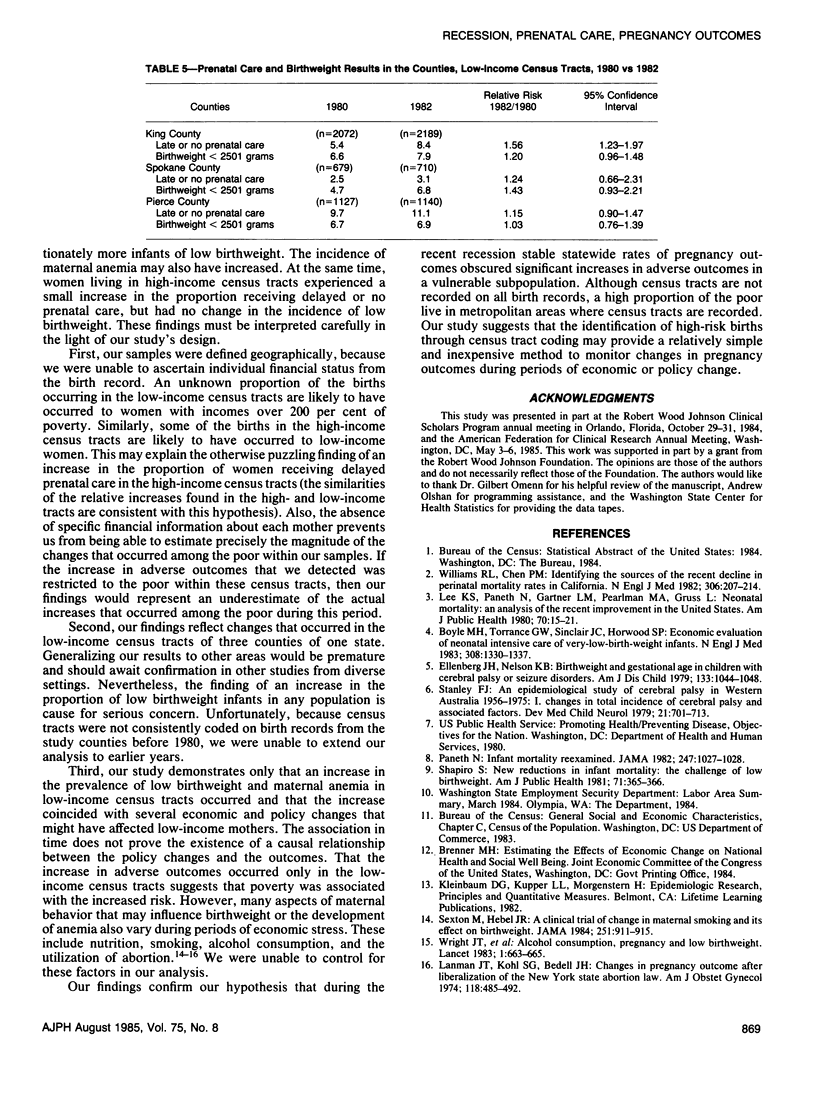Abstract
To determine whether changes in prenatal care utilization and adverse pregnancy outcomes occurred among poor residents of Washington State during the recent recession, we examined all births occurring from 1980 to 1983 to women in the poorest census tracts of the three major metropolitan counties in Washington State (N = 15,735). A comparison sample consisted of all births occurring in the highest income census tracts (N = 16,295). Because the impact of the recession was hypothesized to be greatest in 1982, rates in 1982 were compared with rates in 1980. The proportion of births receiving late or no prenatal care increased in both the low-income tracts (6.2 per cent to 8.2 per cent) and the high-income tracts (1.6 per cent to 2.3 per cent). The proportion of low birthweight infants increased only in the low-income tracts (6.3 per cent to 7.4 per cent). The prevalence of maternal anemia (hematocrit less than 30) also increased only in the low-income tracts (0.7 per cent to 1.7 per cent). While we were unable to ascertain the financial status of the individuals who suffered the adverse outcomes, the findings for the low-income census tracts are consistent with the hypothesis that an increase in adverse pregnancy outcomes occurred among the poor in Washington State during the recent recession.
Full text
PDF



Selected References
These references are in PubMed. This may not be the complete list of references from this article.
- Boyle M. H., Torrance G. W., Sinclair J. C., Horwood S. P. Economic evaluation of neonatal intensive care of very-low-birth-weight infants. N Engl J Med. 1983 Jun 2;308(22):1330–1337. doi: 10.1056/NEJM198306023082206. [DOI] [PubMed] [Google Scholar]
- Ellenberg J. H., Nelson K. B. Birth weight and gestational age in children with cerebral palsy or seizure disorders. Am J Dis Child. 1979 Oct;133(10):1044–1048. doi: 10.1001/archpedi.1979.02130100068014. [DOI] [PubMed] [Google Scholar]
- Lanham J. T., Kohl S. G., Bedell J. H. Changes in pregnancy outcome after liberalization of the New York State abortion law. Am J Obstet Gynecol. 1974 Feb 15;118(4):485–492. doi: 10.1016/s0002-9378(16)33688-2. [DOI] [PubMed] [Google Scholar]
- Lee K. S., Paneth N., Gartner L. M., Pearlman M. A., Gruss L. Neonatal mortality: an analysis of the recent improvement in the United States. Am J Public Health. 1980 Jan;70(1):15–21. doi: 10.2105/ajph.70.1.15. [DOI] [PMC free article] [PubMed] [Google Scholar]
- Paneth N. Infant mortality reexamined. JAMA. 1982 Feb 19;247(7):1027–1028. [PubMed] [Google Scholar]
- Sexton M., Hebel J. R. A clinical trial of change in maternal smoking and its effect on birth weight. JAMA. 1984 Feb 17;251(7):911–915. [PubMed] [Google Scholar]
- Shapiro S. New reductions in infant mortality: the challenge of low birthweight. Am J Public Health. 1981 Apr;71(4):365–366. doi: 10.2105/ajph.71.4.365. [DOI] [PMC free article] [PubMed] [Google Scholar]
- Stanley F. J. An epidemiological study of cerebral palsy in Western Australia, 1956-1975. I: Changes in total incidence of cerebral palsy and associated factors. Dev Med Child Neurol. 1979 Dec;21(6):701–713. doi: 10.1111/j.1469-8749.1979.tb01691.x. [DOI] [PubMed] [Google Scholar]
- Williams R. L., Chen P. M. Identifying the sources of the recent decline in perinatal mortality rates in California. N Engl J Med. 1982 Jan 28;306(4):207–214. doi: 10.1056/NEJM198201283060404. [DOI] [PubMed] [Google Scholar]
- Wright J. T., Waterson E. J., Barrison I. G., Toplis P. J., Lewis I. G., Gordon M. G., MacRae K. D., Morris N. F., Murray-Lyon I. M. Alcohol consumption, pregnancy, and low birthweight. Lancet. 1983 Mar 26;1(8326 Pt 1):663–665. doi: 10.1016/s0140-6736(83)91964-5. [DOI] [PubMed] [Google Scholar]


